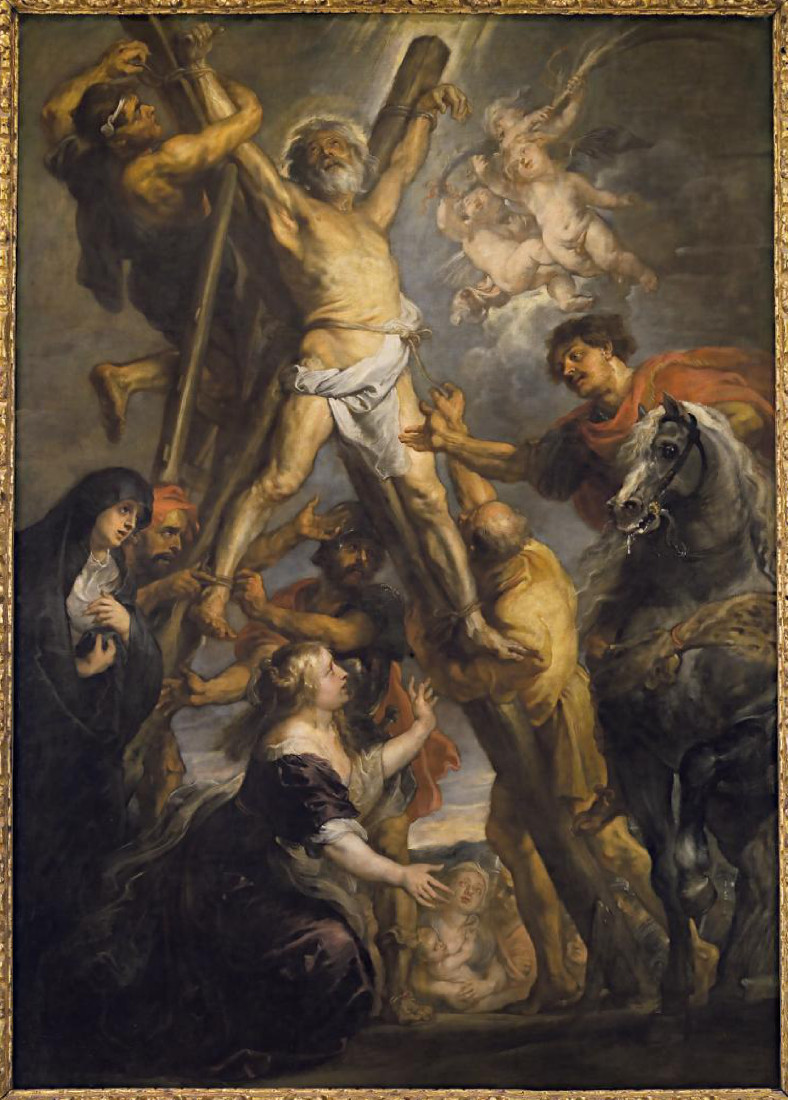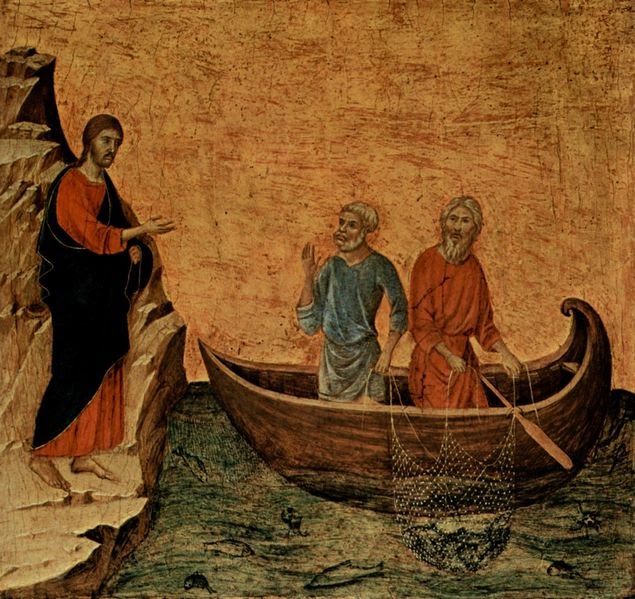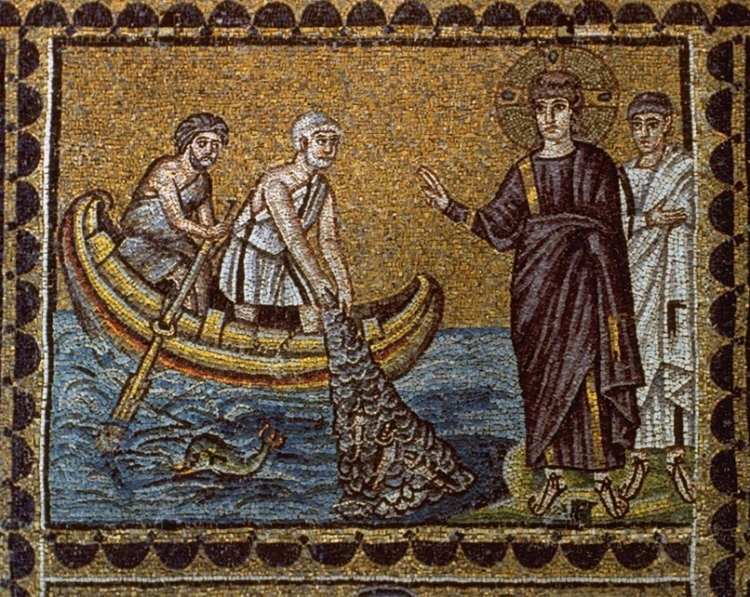Today is the feast day of another of saints of the Roman Canon about whom we know very little beyond the fact of her existence and her martyrdom. Nevertheless, St Agatha is one of the most highly venerated virgin martyrs. By tradition, she died in the persecution of Decius in 251 AD.
According to tradition she suffered cruel torture, her breasts were pierced with pincers and she was healed by St Peter. Then she was then subjected to torture by hot coals and shards of glass until this was interrupted by the eruption of Mt Etna. Finally, she was sent back to prison where she died of starvation.
It is this gruesome death and the grace with which she faced it, that is reflected in the iconography of her. She is a young woman who carries severed breasts on a plate or has pincers. She sometimes displays a candle or flame, a symbol of her power against fire; a unicorn's horn - a symbol of her virginity; or a palm branch or cross - symbols of martyrdom. Many of the images from the Renaissance and Baroque periods graphically focus on some of these details in ways that might not appeal to modern sensibilities (or mine at any rate!).
The last painting is by Zurburan and the one before that by Piero Della Francesca - which is in my opinion very poor. This heartens me as it shows that even an artist as great as he was can have an off day!
This early Baroque painting, from 1614 by Giovanni Lanfranco is more tasteful, I feel, showing St Peter healing her injuries.
In the Eastern Church, she is known as St Agatha of Palermo and icons of her tend to show the generic symbols of martyrdom, the palm branch or cross.
This is one of a series of articles written to highlight the great feasts and the saints of the Roman Canon. All are connected to a single opening essay, in which I set out principles by which we might create a canon of art for Roman Rite churches, and a schema that would guide the placement of such images in a church. (Read it here.) In these, I plan to cover the key elements of images of the Saints of the Roman Canon - Eucharistic Prayer I - and the major feasts of the year. I have created the tag Canon of Art for Roman Rite to group these together, should any be interested in seeing these articles as they accumulate. For the fullest presentation of the principles of sacred art for the liturgy, take the Master’s of Sacred Arts, www.Pontifex.University.



















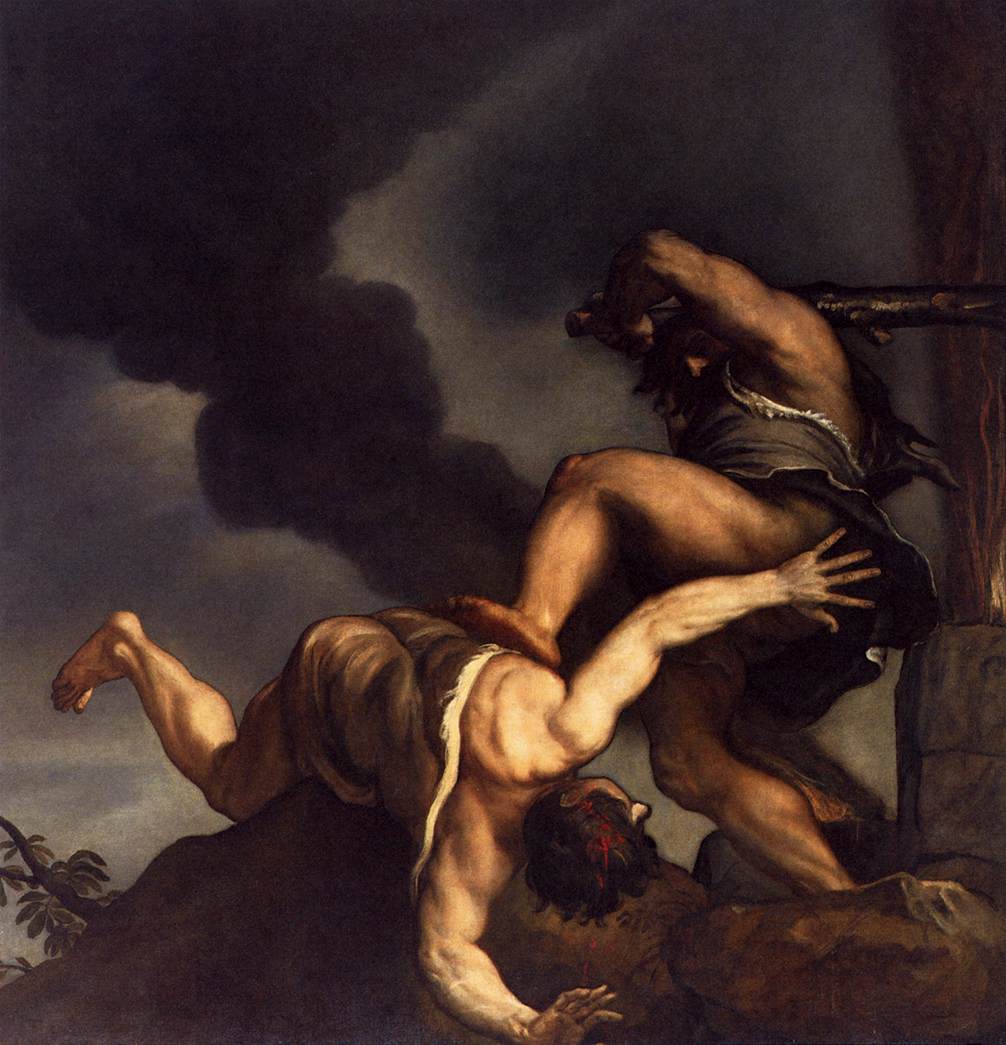



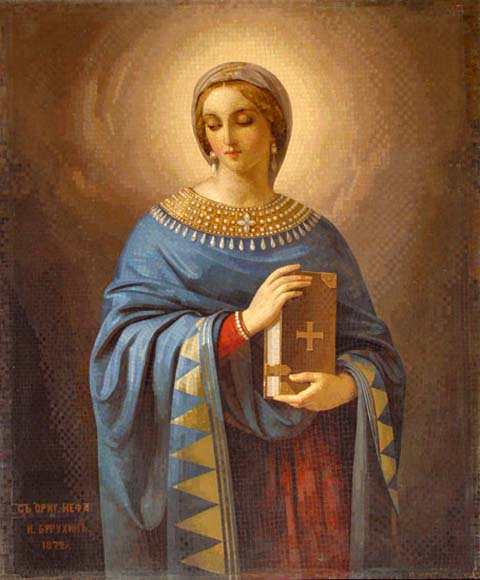
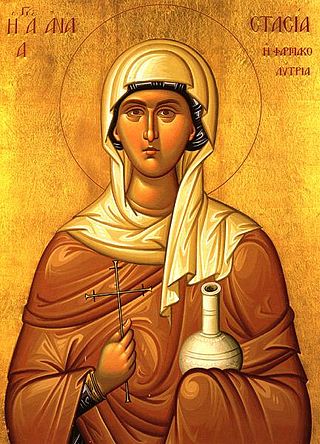
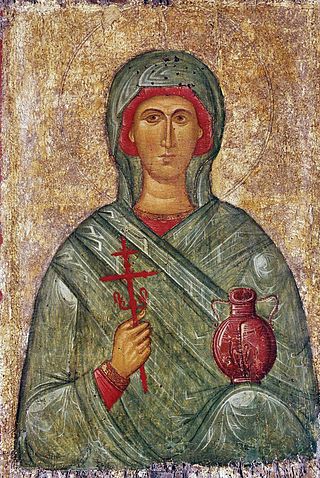

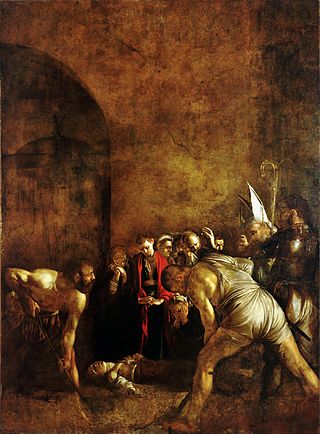
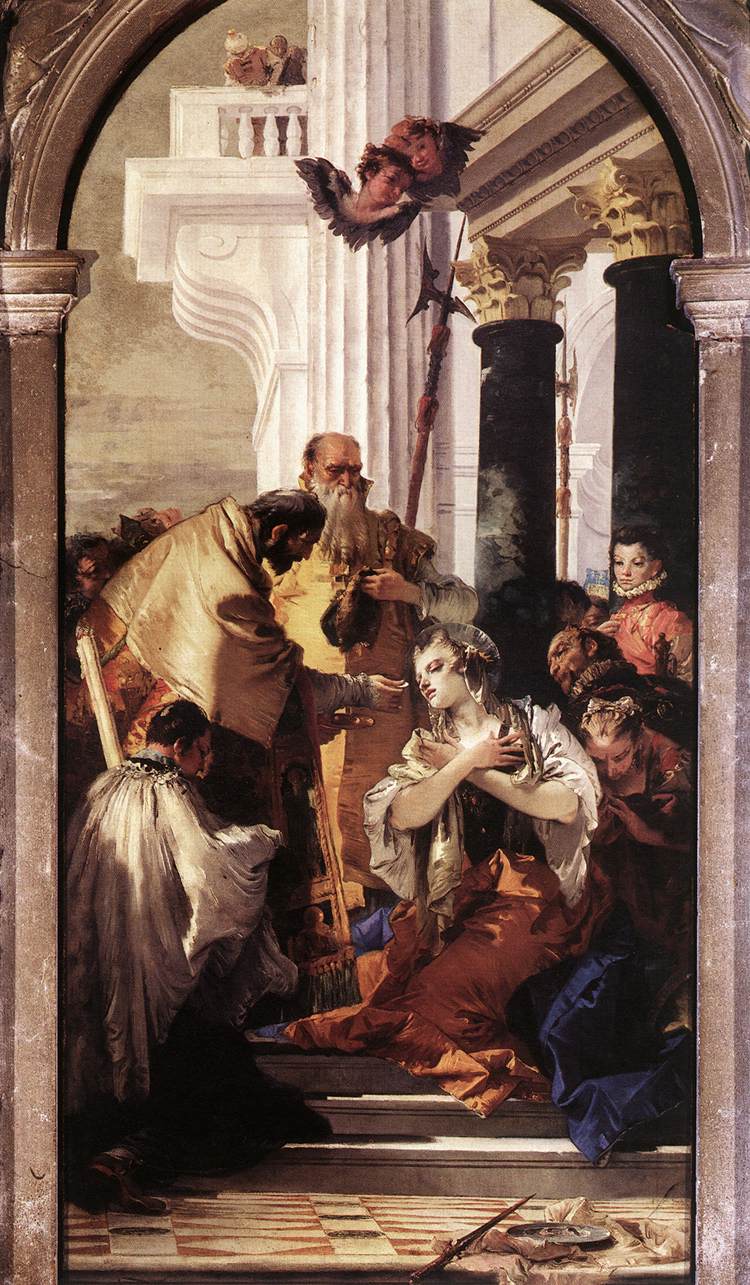 Other attributes we will see are a palm branch - which is appropriate to all martyrs - as seen in this famous Renaissance period painting by Francesco de la Cossa
Other attributes we will see are a palm branch - which is appropriate to all martyrs - as seen in this famous Renaissance period painting by Francesco de la Cossa  And, people struggling to move her. The consul Paschasius ordered that she be removed to a brothel and abused until she died. However, teams of men tried but failed to move her. We see this in the painting below in this 15th-century depiction. Teams of oxen are being used.
And, people struggling to move her. The consul Paschasius ordered that she be removed to a brothel and abused until she died. However, teams of men tried but failed to move her. We see this in the painting below in this 15th-century depiction. Teams of oxen are being used. 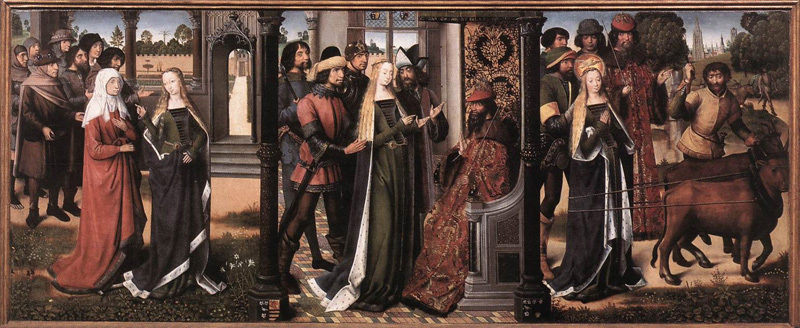 A tradition iconographic image has the saint holding a cross as a sign of martyrdom as in the beautiful fresco:
A tradition iconographic image has the saint holding a cross as a sign of martyrdom as in the beautiful fresco: 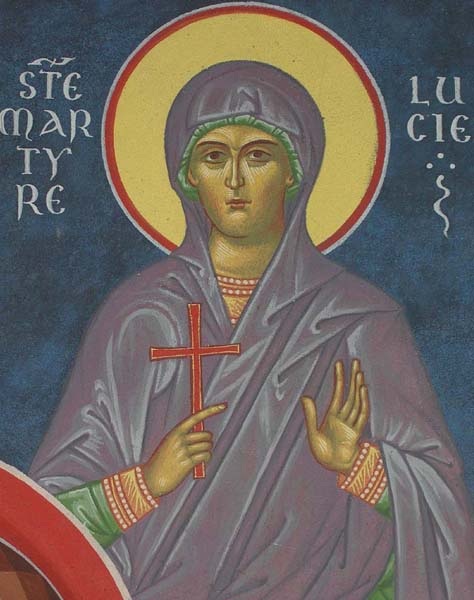 I finish with Caravaggio and his burial of St Lucy. This is a late painting done when he was in exile, so to speak, from Rome and living in Sicily, the home of St Lucy. It is an altarpiece and in my opinion, one of the most brilliant paintings he has done. I do not know if the stylistic development is by accident or design, but regardless I like the result. Notice how much more this reflects the developing baroque style than his early work. It is shrouded in more mystery, with disappearing edges, far more numinous monochrome rendering and less colouration than he might have painted in his youth. The composition is brilliant, with the arcs of the arcs of the limbs of the two figures in the foreground creating a mandorla, which frames the figure of St Lucy.
I finish with Caravaggio and his burial of St Lucy. This is a late painting done when he was in exile, so to speak, from Rome and living in Sicily, the home of St Lucy. It is an altarpiece and in my opinion, one of the most brilliant paintings he has done. I do not know if the stylistic development is by accident or design, but regardless I like the result. Notice how much more this reflects the developing baroque style than his early work. It is shrouded in more mystery, with disappearing edges, far more numinous monochrome rendering and less colouration than he might have painted in his youth. The composition is brilliant, with the arcs of the arcs of the limbs of the two figures in the foreground creating a mandorla, which frames the figure of St Lucy. 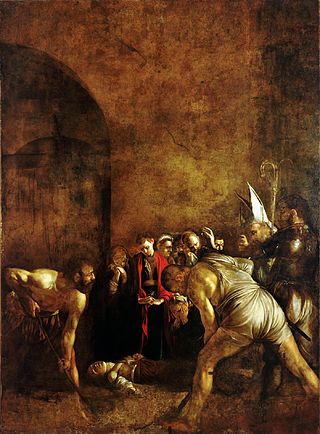 This is one of a series of articles written to highlight the
This is one of a series of articles written to highlight the 


